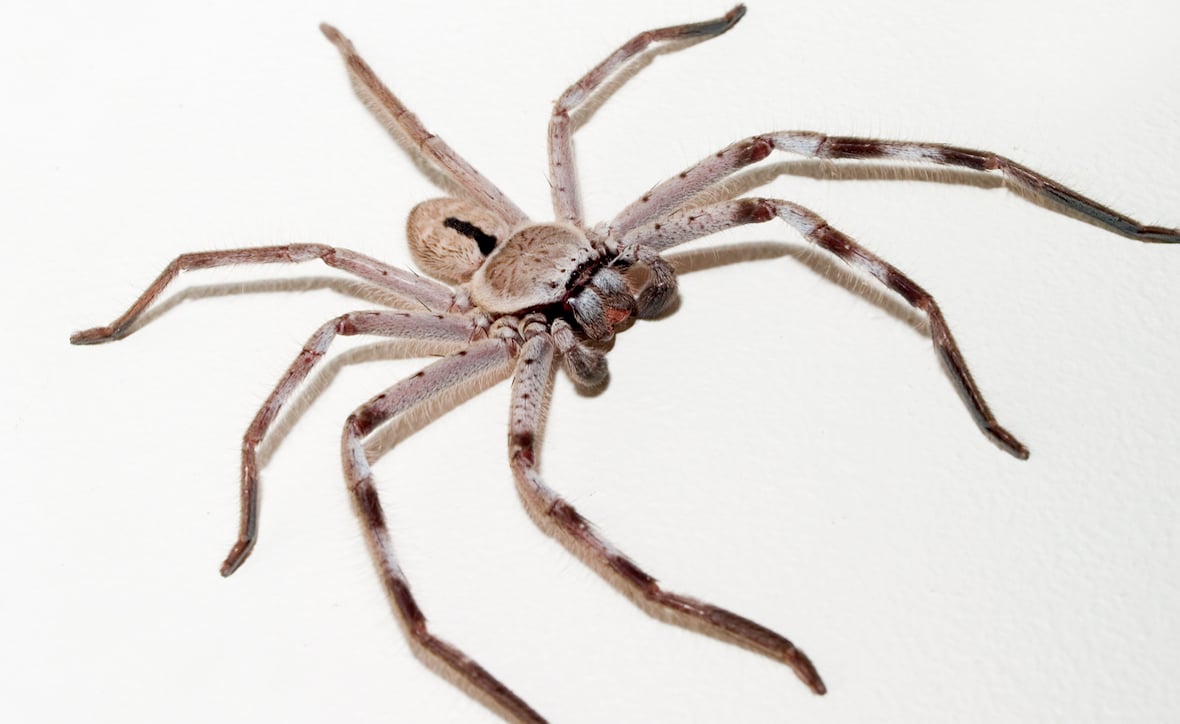

Folklore stories claim the spiders traveled from Asia in boxes of bananas, and because of that, they are sometimes called banana spiders. They live in some warm American states such as Florida, California and Texas, and, according to the University of Florida (opens in new tab), it is presumed that they were introduced from Asia. They are also prevalent in Africa, Australia and South America, according to Science Alert (opens in new tab). The giant huntsman was found in Laos, and most huntsman species are native to Asia. Classification/taxonomyĪccording to the Integrated Taxonomic Information System (opens in new tab) (ITIS), the taxonomy of giant huntsman spiders is: Many huntsman species' bodies have a flattened appearance, ideal for squeezing into tight places, according to the Australian Museum (opens in new tab). The spiders' legs are typically gray or brown, and banded. Males have longer legs, although females have larger bodies. Huntsman spiders' legs have twisted joints, which allow the appendages to extend forward like a crab's and their alignment allows the spider to move side-to-side, also similar to a crab. (Image credit: Getty Images ) (opens in new tab) Please direct all inquiries and comments to insectidentification AT image of a female huntsman spider ( Heterpoda venatoria) taken in a home in West Bengal, India. When emailing please include your location and the general estimated size of the specimen in question if possible. Images in JPG format are preferred with a minimum horizontal dimension of 1000px if possible. By submitting images to us () you acknowledge that you have read and understood our Site Disclaimer as it pertains to "User-Submitted Content". Material presented throughout this website is for entertainment value and should not to be construed as usable for scientific research or medical advice (regarding bites, etc.).Please consult licensed, degreed professionals for such information.

This resource uses publically-released information. The logo, its written content, and watermarked photographs/imagery are unique to this website (unless where indicated) and is protected by all applicable domestic and international intellectual property laws. ©īeetle Identification Butterfly Identification Caterpillar Identification Spider ID Fungal Infections on Insects Nursery Web Spider Official State Insects Termite Basics Insect Molting Process Bugs of Tennessee The symptoms from a bite can range from swelling and pain or include vomiting, headaches, and faster heart rate in victims depending on how much venom was injected. All Huntsman Spiders will deliver a painful bite if threatened. Females will aggressively defend an egg sac. Females lay fertilized eggs in silken sac and carry it around in their jaws until the spiderlings hatch. It is just audible in a quiet room and may be mistaken for a ticking clock. Males shake their legs, creating a dull, low buzzing sound in an effort to attract females. In a few places, they are welcomed by homeowners thanks to their steady diet of residential nuisances like scorpions, however, most people do not want them inside. Huntsman Spiders sometimes make their way into houses and barns. They will eat small bats if they can catch them. These spiders are night predators, preying on cockroaches and other insects found traveling the bark of trees. All are brown with a darker area near the strong and large mouthparts. Females are heavier, but males have longer legs. They are able to walk sideways and backward as well as forward. As part of the Crab Spider family, this spider is comfortable stretching its first 2 or 3 pairs of legs forward, giving it more of a crab-like appearance. This robust arachnid prefers to live in warm climates.


Although this species of spider is already established in the Southeast, sometimes they stow away on produce from Mexico or Central America and land in other states in the U.S.


 0 kommentar(er)
0 kommentar(er)
